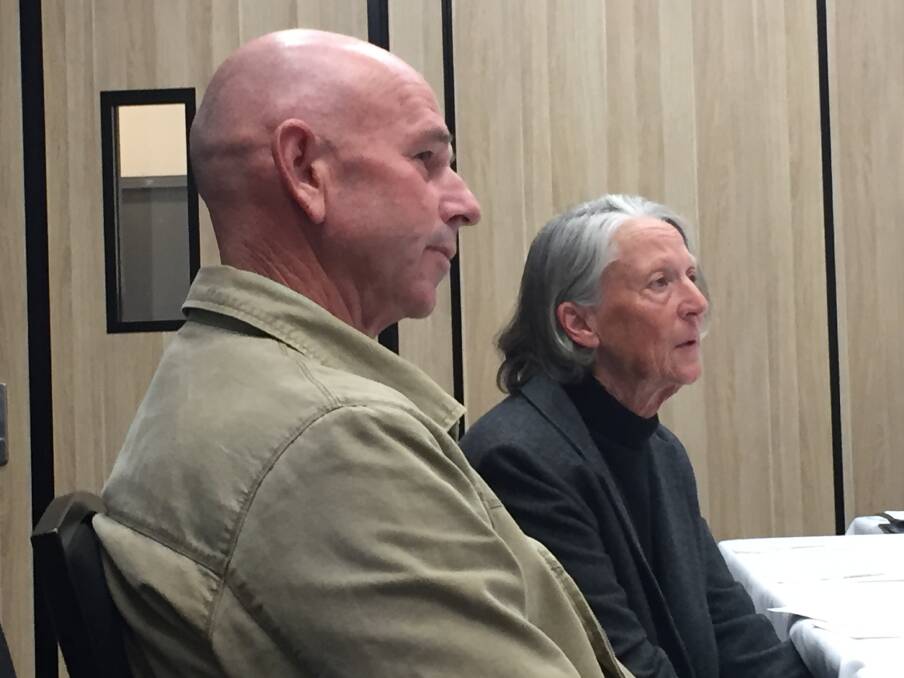
THE reliability of a national blood sampling program for toxic firefighting chemicals is under question, after a private test showed more than double the level of a contaminant in a man’s blood compared to a government sample taken on the same day.
Subscribe now for unlimited access.
$0/
(min cost $0)
or signup to continue reading
The fresh concerns over testing methods for per- and poly-fluoroalkyl chemicals (PFAS) come after Fairfax Media independently sampled a drain near a military base last year and discovered the chemicals at levels 34 times higher than those reported by authorities.
Terry Robinson, who occupies a polluted acreage near the Williamtown RAAF base, had his blood sampled twice on March 19.
It was scanned for a range of PFAS chemicals, with the most glaring difference in the readings for the chemical perfluorohexane sulfonic acid (PFHxS). The government-commissioned test detected the chemical in his blood at 21ng/ml, while the privately-funded testing found more than twice that, at 49ng/ml.
The laboratories detected the chemical of the greatest concern, perfluorooctane sulfonate (PFOS), at 60ng/ml and 70ng/ml respectively.
The Morrison government is facing multiple class action lawsuits over its refusal to compensate people stranded on unsaleable properties as a result of Defence’s use of firefighting foams containing the potential carcinogenic chemicals.
The Department of Health has offered a free blood test to people living and working near contaminated military bases through a contractor – Sonic Healthcare – at a cost of over $3 million.
Mr Robinson had the private blood sample drawn by Laverty Pathology and analysed at the National Measurement Institute (NMI), the Australian government’s peak scientific laboratory. The results only further eroded his faith in authorities.
“You have no confidence at all in them,” Mr Robinson said. “We want all the proof in front of us.”
Another Williamtown resident, Len O’Connell, was shocked to discover a similar stark discrepancy when he undertook a private test. Laverty and NMI detected PFOS in his blood at 150ng/ml. A few months later, Sonic Healthcare recorded 119ng/ml, even though the chemical takes years to break down.
When he raised the matter at a public meeting, Mr O’Connell alleges he was told by authorities that test results would vary.
“I said ‘come on are, you for real?” he recalled. "Surely a test is a test and there can’t be that much difference … whenever we go to these meetings that’s all you get told, a pack of lies.”
The Department of Health did not respond to a request for comment.
A spokesperson for Sonic Healthcare defended its results, saying “comprehensive quality control processes” were in place to ensure their reliability.
“Sullivan Nicolaides Pathology, a subsidiary of Sonic Healthcare, is a nationally accredited laboratory for the testing of perfluorinated (PFAS) compounds in human serum samples,” she said. “As part of this accreditation, Sullivan Nicolaides Pathology complies with all relevant testing regulations including participation in external proficiency testing programs and the use of externally certified standard reference materials.”
The body responsible for administering accreditation in Australia is the National Association of Testing Authorities. Quality manager Phillip Hill said the organisation had not been made aware of any concerns over differences in results, but could not comment on the specific methodologies used by laboratories. Accredited facilities could use international, national or regional standards or their own in-house methods, Mr Hill said, but were required to verify or validate their choice as part of the assessment process.
“It is therefore possible that different methodologies could be employed by different facilities,” he said.
Mr Hill said there was ongoing monitoring of accredited facilities, including via proficiency testing programs.
However Fairfax Media was unable to locate any such proficiency testing programs for PFAS in blood in Australia.
President of the Coalition against PFAS, Lindsay Clout slammed the developments, which come after the Department of Health initially opposed blood testing and then backflipped following community pressure.
“Communities had to bring the government kicking and screaming to the table to even get blood testing to occur,” Mr Clout said.
“It reflects a wide culture of indifference and dismissiveness from the chief medical officer and authorities.”

